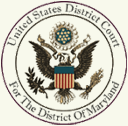Are Pensions Treated the Same in Your Estate Plan as Other Retirement Accounts?

The first private pension plan in the United States was established in the late 1800s. Through 1980, nearly 40 percent of Americans were covered by a traditional employer-funded pension. But employer-provided retirement plans have now largely shifted to retirement savings vehicles like 401(k) plans and Individual Retirement Accounts (IRAs) that place most of the savings’ onus on the employee. It is important to understand the differences in pensions vs. IRAs vs. 401Ks when considering retirement accounts and estate planning.
Pension and retirement accounts often form a large portion of an individual’s wealth and should be accounted for in an estate plan. If a retirement account holder completes a proper beneficiary designation, their account assets will bypass probate. Account holders often designate a surviving spouse or children as beneficiary, but they could also name a trust or a charity.
The benefit and beneficiary rules applicable to different types of retirement accounts vary and should be discussed with an estate planning attorney, especially with the recent passage of the SECURE Act.
How Pensions Have Changed: Defined Benefit versus Defined Contribution Plans
The American Express Company provided the original private pension plan to its workers in 1875. Soon after, banks, manufacturing companies, and utilities also began offering pension plans.[1]
These early pensions were defined benefit (DB) plans. Funded entirely by employers, DB plans pay workers a specific monthly benefit for life once they retire. Typically, DB plans calculate a benefit based on factors like a worker’s salary and service length and make regular payments (annuity payments) over the employee’s life after retirement (or the joint lives of the employee and their spouse). The employer that provides a DB pension control and owns the plan.
Traditional DB pension plans have mostly given way to defined contribution (DC) plans, such as 401(k)s. DC plans are owned and controlled by employees but are often subsidized by employers. Other types of DC plans are 403(b), 457, and 529 plans. IRAs are not employer-sponsored but can also be considered a DC plan since they involve defined contributions by the IRA owner into tax-advantaged accounts.[2] DC plans generally pay retirement benefits as a lump sum or installments.
From 1980 to 2008, the proportion of private industry workers participating in DB plans decreased from 38 percent to 20 percent.[3] In 2020, 85.3 million Americans had a DC plan compared to just 12 million workers with a DB plan.[4]
In 2020, 18.2 percent of Americans were covered by an IRA-style retirement account, 34.6 percent had a 401(k)-style account, and 13.5 percent had a DB plan, reports the U.S. Census Bureau. The median value of a retirement account in 2020 was about $30,000.[5]
Congress passed the Employee Retirement Income Security Act (ERISA) in 1974 to guarantee workers’ benefits in private pension plans. Before then, pensions had little or no protection, and there were incidents of workers losing their earned retirement benefits. ERISA covers most employer-sponsored DB plans and DC plans, but not government employee plans or IRAs.
DB Plans, DC Plans, and Beneficiaries: Understanding Retirement Accounts and Estate Planning
The only estate planning tool applicable to retirement accounts is the beneficiary designation. Retirement accounts must be owned by an individual, so they cannot be transferred into a revocable living trust during the participant’s lifetime like most other financial accounts or property. Further, they cannot be jointly owned. Thus, the only way to control how these accounts transfer at the time of the participant’s death is through the use of properly designated beneficiaries.
In general, participants in an ERISA-covered plan can select anyone to be the plan’s beneficiary when they die.[6]
- Most plans regulated by ERISA name a person’s spouse to automatically receive the benefit if the account holder dies first.
- If the account holder wishes to select a different beneficiary, their spouse must consent by signing a waiver. Otherwise, the spouse is entitled to 50 percent of the plan’s benefits, even if somebody else is named as the plan beneficiary.
- An ERISA plan holder who divorces and remarries should update the beneficiary designation to their current spouse or else the former spouse may be in line to inherit the plan benefits.
- An account holder who does not have a spouse can name an alternate beneficiary. This may be a person such as a child, parent, or sibling, but it can also be a charity or a trust.
- The named beneficiary of an ERISA retirement plan takes precedence over somebody designated in a will as the plan’s beneficiary when there is a conflict between the two.
- When an ERISA retirement plan does not designate a beneficiary, the benefit passes to the participant’s probate estate and is distributed along with other probate assets according to the will (if the participant has created one) or according to state intestacy law (if the participant has not created one).
IRAs are not covered by ERISA. An IRA account holder can name a beneficiary (or multiple beneficiaries) to receive the account assets. They can also name their probate estate to be the beneficiary of the IRA, in which case the account proceeds will be distributed according to their will (if they have created one) or according to state intestacy law (if they have not created one). A trust or charity can be designated to receive IRA funds as well. An IRA with no beneficiary designation is distributed pursuant to the IRA’s governing document.
Employees with a DB plan may be able to name a beneficiary, but this right is not guaranteed because the employer owns the plan and sets the terms. For a DB plan, a current spouse may be entitled to a qualified joint and survivor annuity (QJSA) death benefit paid out over their lifetime. The plan may provide the annuity payout percentage, which could be at least 50 percent but no more than 100 percent of the annuity paid to the participant. It may be possible, with spousal consent, for a participant to waive the QJSA and select a different payment option. QJSA rules may also apply to non-defined benefit plans, but only through an election.[7]
The SECURE Act and Inherited Retirement Accounts
Passed in 2019 and effective in 2020, the Setting Every Community Up for Retirement Enhancement (SECURE) Act affects DC plans like 401(k)s and IRAs and has implications for estate planning.
Under the SECURE Act, the age at which retirees must make annual withdrawals, called minimum required distributions (RMDs), increased from 70.5 to 72. In 2023, that age was raised to 73.
A retiree who lives a long life might deplete a large portion of their retirement account due to RMDs and have little left in the account to give to heirs. But the SECURE Act also affects those who inherit an IRA or 401(k) in a more direct way.
While beneficiaries of these accounts always had to pay taxes on all withdrawals from them, prior to the SECURE Act, they could stretch out withdrawals over their life expectancy to minimize their tax bill. Beginning in 2020, however, most non-spouse retirement account beneficiaries must completely withdraw the balance of their inherited portion within 10 years of the original account holder’s death. For minors, the 10-year rule starts when they turn 21. These new rules do not apply to a surviving spouse named as an account beneficiary. Spouses that inherit retirement accounts still receive preferential tax treatment in the SECURE Act. A popular option is for the inheriting spouse to roll over the account into their own IRA and name their own beneficiaries for the account. The spouse is then treated as the original IRA owner for income tax purposes.[8]
Another option for an account holder when designating a beneficiary is to designate the account owner’s trust rather than naming individual beneficiaries. When the accounts transfer into the trust upon the account owner’s death, the language in the trust agreement will direct how and when the retirement proceeds are to be distributed to trust beneficiaries. The retirement account owner might prefer this option if they are concerned that the beneficiary might immediately deplete money or fail to set aside enough funds to cover taxes that might be due on withdrawals. Also, trusts can provide asset protection from creditors and help centralize asset management.
Retirement Accounts and Estate Planning
You saved hard for your retirement. The money you set aside could benefit more than just you. Most retirement accounts can be transferred to your heirs when you die, enabling them to supplement their own savings goals.
Retirement assets can transfer directly to properly designated beneficiaries outside of probate. But these assets will be subject to federal and state income tax, and possibly even estate taxes. The SECURE Act could further impact your estate planning efforts.
Your retirement accounts could be the single largest store of economic value that you leave behind. To maximize their value to loved ones after you are gone, be sure that you understand the different inheritance and tax rules that may apply, review beneficiary designations regularly, and speak to an estate planning attorney about how to best provide for your family’s future. To discuss your retirement accounts and estate planning, call Andre O. McDonald, a knowledgeable Howard County, Montgomery County and District of Columbia estate planning, special-needs planning and Medicaid planning attorney at, (443) 741-1088; (301) 941-7809 or (202) 640-2133 to schedule an appointment to ensure that all of your hard-earned money and property are properly planned for.
DISCLAIMER: THE INFORMATION POSTED ON THIS BLOG IS INTENDED FOR EDUCATIONAL PURPOSES ONLY AND IS NOT INTENDED TO CONVEY LEGAL, INSURANCE OR TAX ADVICE.
[1] History of PBGC, PBGC (Nov. 16, 2023), https://www.pbgc.gov/about/who-we-are/pg/history-of-pbgc.
[2] Adam Hayes, What Are Defined Contribution Plans, and How Do They Work?, Investopedia (July 22, 2023), https://www.investopedia.com/terms/d/definedcontributionplan.asp.
[3] Barbara A. Butrica et al.,The Disappearing Defined Benefit Pension and Its Potential Impact on the Retirement Incomes of Baby Boomers, 69 Soc. Sec. Bull. 1 (2009), https://www.ssa.gov/policy/docs/ssb/v69n3/v69n3p1.html.
[4] Jeanne Sahadi, Traditional Pension Plans Are Pretty Rare. But Here’s Who Still Has Them and How They Work, CNN (Sept. 7, 2023), https://www.cnn.com/2023/09/07/success/pensions-retirement-savings-explained/index.html.
[5] Maria G. Hoffman, Who Has Retirement Accounts? New Data Reveal Inequality in Retirement Account Ownership, U.S. Census Bureau (Aug. 31, 2022), https://www.census.gov/library/stories/2022/08/who-has-retirement-accounts.html.
[6] U.S. Dep’t of Labor, FAQs about Retirement Plans and ERISA, https://www.dol.gov/sites/dolgov/files/EBSA/about-ebsa/our-activities/resource-center/faqs/retirement-plans-and-erisa-for-workers.pdf (last visited Mar. 25, 2024).
[7] Types of Retirement Plan Benefits, IRS.gov (Apr. 21, 2023), https://www.irs.gov/retirement-plans/types-of-retirement-plan-benefits.
[8] Svetlana V. Bekman & Stacy E. Singer, IRAs and IRA Beneficiaries, ACTEC, https://www.actec.org/resource-center/video/iras-and-ira-beneficiaries (last visited Mar. 25, 2024).











